30 Different Types of Drills & Their Uses (with Pictures)
-
- Last updated:


Having the appropriate tool for the job is the first step to creating quality work. When it comes to drills, these tools vary considerably in size, function, speed, and power.
Therefore, before you set out to buy one, it is important to educate yourself about the various types and their uses so you can make an informed choice.
The following are the most common types of drills and their uses.

Manual Drills (Best for Home Use)
These were the first types of drills to be created. They convert the circular motion that you create physically into amplified torque to allow you to drill holes into hard surfaces. Even though manual drills are not as popular as they once were – due to the physical effort they demand – they are valuable tools to have around the house in case of a power outage. They include:
1. Eggbeater Hand Drill
This is a gear-driven drill that comes with a driving wheel, which spins when you rotate the handle. Once the wheel starts spinning, the drill moves with the chuck, causing the bit to rotate. This manual tool is adept at making smaller holes in wood and smaller metals.
2. Breast Drills
These tools work quite similarly to eggbeater hand drills, with the only difference being that they come with a plate attached to their back. This plate allows you to apply more drilling pressure by pressing against the drill using your chest during operation. This makes this type of drill more powerful than eggbeater hand drills.
3. Brace Drill
The brace drill comes with a U-shaped spindle that allows you to generate more torque upon cranking it. It also features another spindle at the top that allows you to grip and align the tool in the desired position. The brace drill is used for countersinking when working with wood.
4. Bow Drill
This tool is also known as a fire drill, as it can start fires without matches. It comes with a bow, hearth, spindle, and a bearing block. It utilizes friction to create heat, which then creates an ember in sawdust.
5. Crank Drill
The crank drill features a high helix angle that allows it to create deep holes in tough materials by increasing its penetration efficiency. It also comes with a sharp tip to enhance its cutting ability. The crank drill is one of the few manual drills you can use to drill into hard metals, such as steel.
6. Gimlet
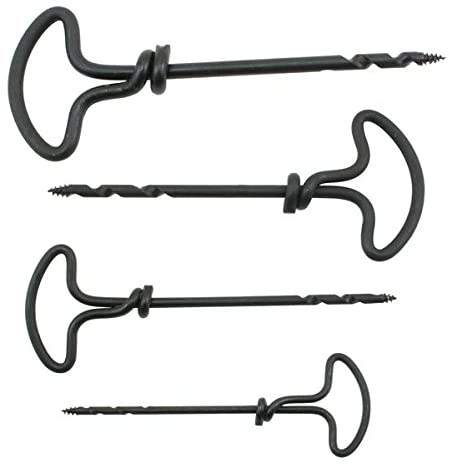
A gimlet is a long drill bit that comes with rotation handles. This tool utilizes leverage to create deep and broad holes. Extending its handles allows you to generate more force.
7. Push Drill

The push drill is a smaller but more powerful version of the hand drill. It features a spiral ratchet for rotating the bit. This drill is used in woodworking applications that require high levels of accuracy or precision.
8. Post Drill
They get their name from the fact that they are mounted onto posts. These hand-powered presses can bore holes into iron, although the size and depth of that hole will depend on the operator’s strength.
9. Table Drill
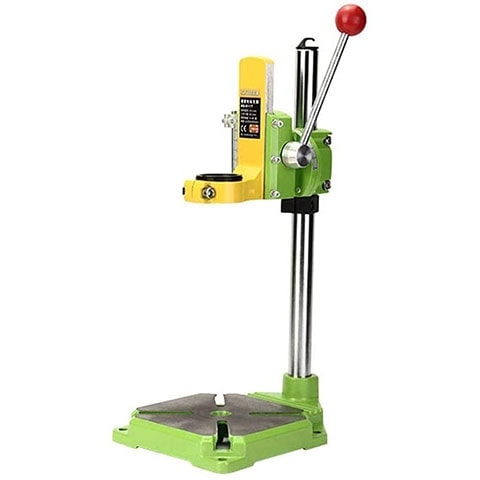
This general-purpose drilling machine provides you with a wide and stable surface for working on your materials. Nonetheless, since it relies on your strength, it might not be suitable for heavy-duty drilling.

Powered Drills
The different types of powered drills come with motors for powering their operations. They are much more powerful than manual drills while not requiring any physical exertion from your part. As a result, they are ideal for serious DIYers and professionals. They include:
10. Cordless Drills

These units are battery-powered, which makes them incredibly convenient since you can use them anywhere. Out of all powered drill types, however, cordless drills tend to have the least power output. Nonetheless, there are some powerful ones, which are quite expensive. Another disadvantage of cordless drills is their limited runtime. These drills are ideal for casual home users or professionals who have to work in off-grid job sites.
Related Article:
11. Corded Drills
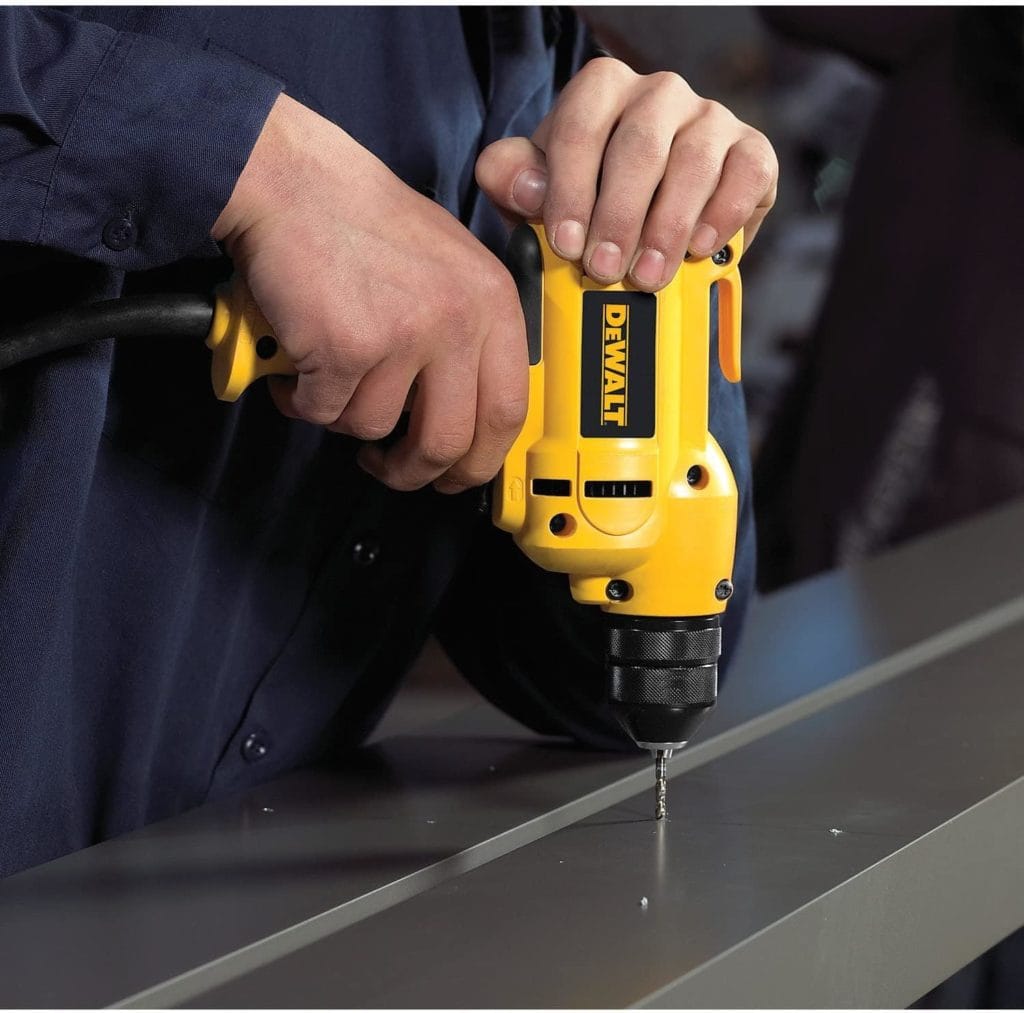
Corded drills are lighter and more powerful versions of cordless drills. However, they need to be connected to a wall socket at all times for them to work, which limits their portability significantly. Nonetheless, they are great drills for heavy-duty use in the workshop.
See Also:
12. Reversible Drills

These drills can rotate in both clockwise and anticlockwise directions. As such, they are great for tightening and loosening screws in a quick and effective fashion.
13. Impact Drills
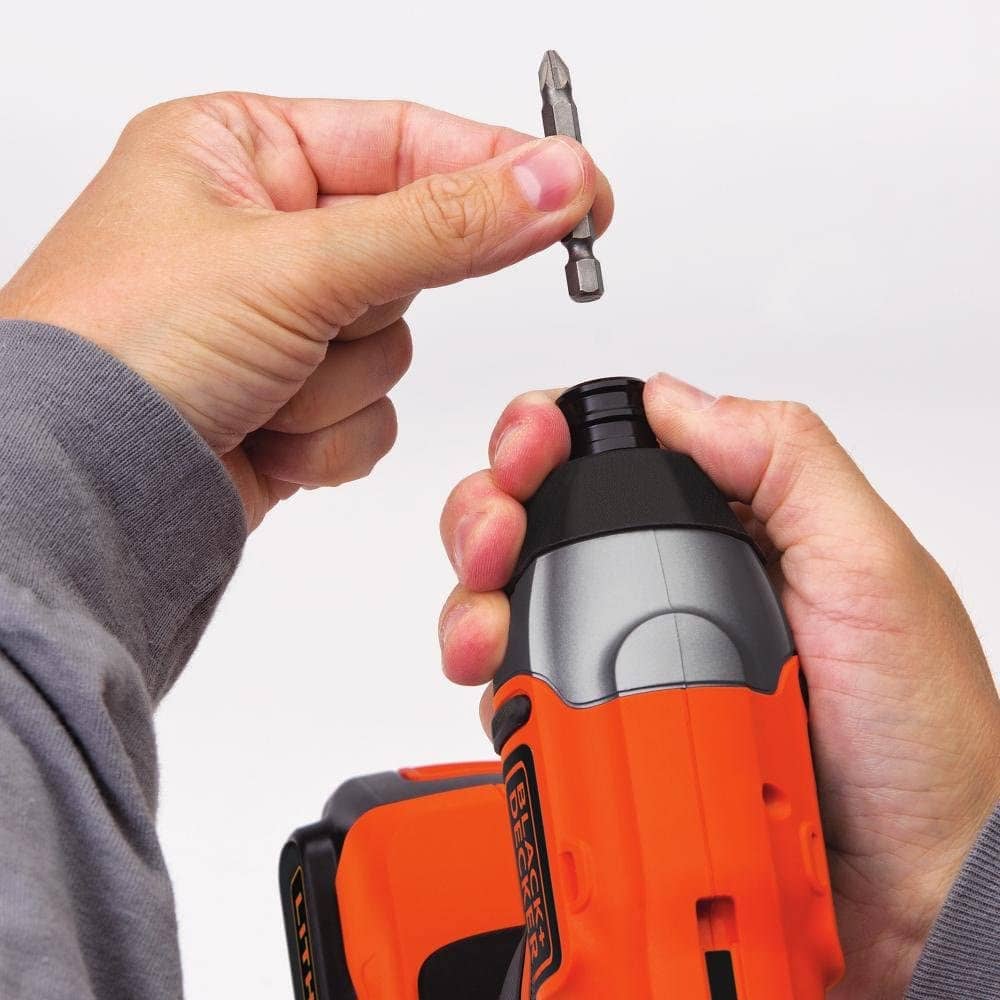
Impact drills are well suited for heavy-duty use in woodworking. This is because, unlike standard drills, impact drills start pounding the material once they encounter resistance, thus allowing them to make holes in tougher materials. Nevertheless, they are poor at fastening screws since they tend to jam fasteners into the surface.
14. Hammer Drills

The hammer drill gets its name from its working mechanism, which involves a constant pounding motion. Like impact drills, hammer drills are also terrible at fastening. However, they are excellent at making holes in extra hard surfaces.
15. Rotary Hammer Drill
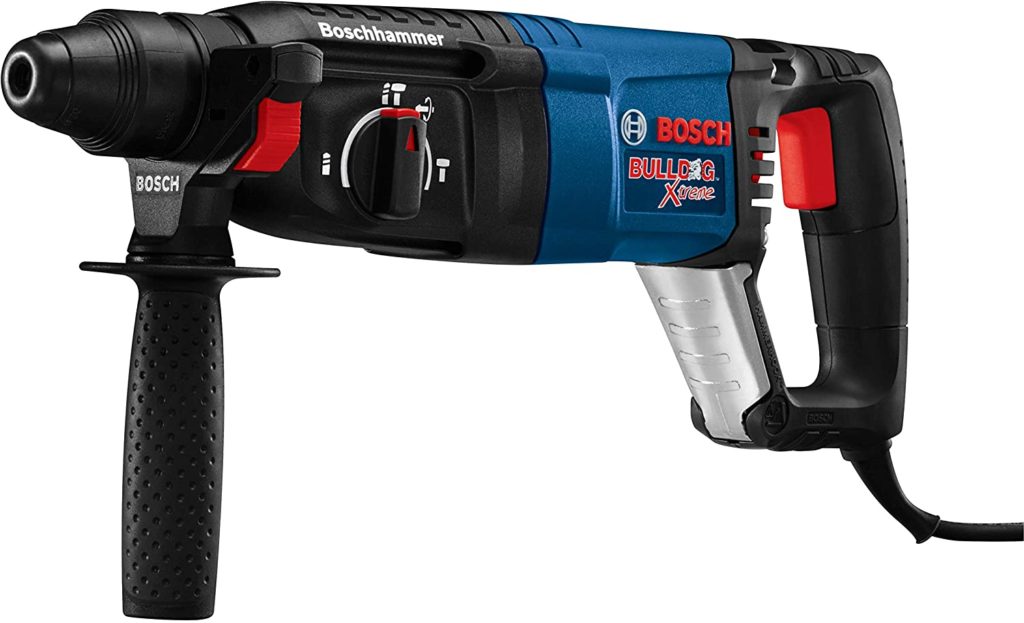
This drill is typically used in masonry. It comes with an extra grip for better handling. The main difference between it and a regular hammer drill is that it uses pistons rather than cam plates for accelerating the drill bit.
16. D-Handle Drills

A D-handle drill is essentially a hammer drill with its trigger at the back instead of the front. D-handle features powerful motors that allow them to generate constant speed and power. In addition to drilling, they are also used in mixing applications.
17. Combination Drill

Also known as a combi drill, this tool can function as both an impact and a hammer drill. As a result, it is a great value choice for someone who needs both. Combination drills also work on both soft and tough materials.
18. Mechanic Drill
A mechanic drill comes with a versatile design that allows it to adapt to both light and heavy-duty use. Therefore, instead of buying separate drills for dealing with softwood and metals, respectively, a single mechanic drill should do the trick.
19. Auger Drill
This is a larger drill that is used to bore holes into the ground. It comes in both one- and two-person versions. The motor is position above the bit and comes with large handles for operation.
20. Core Drill
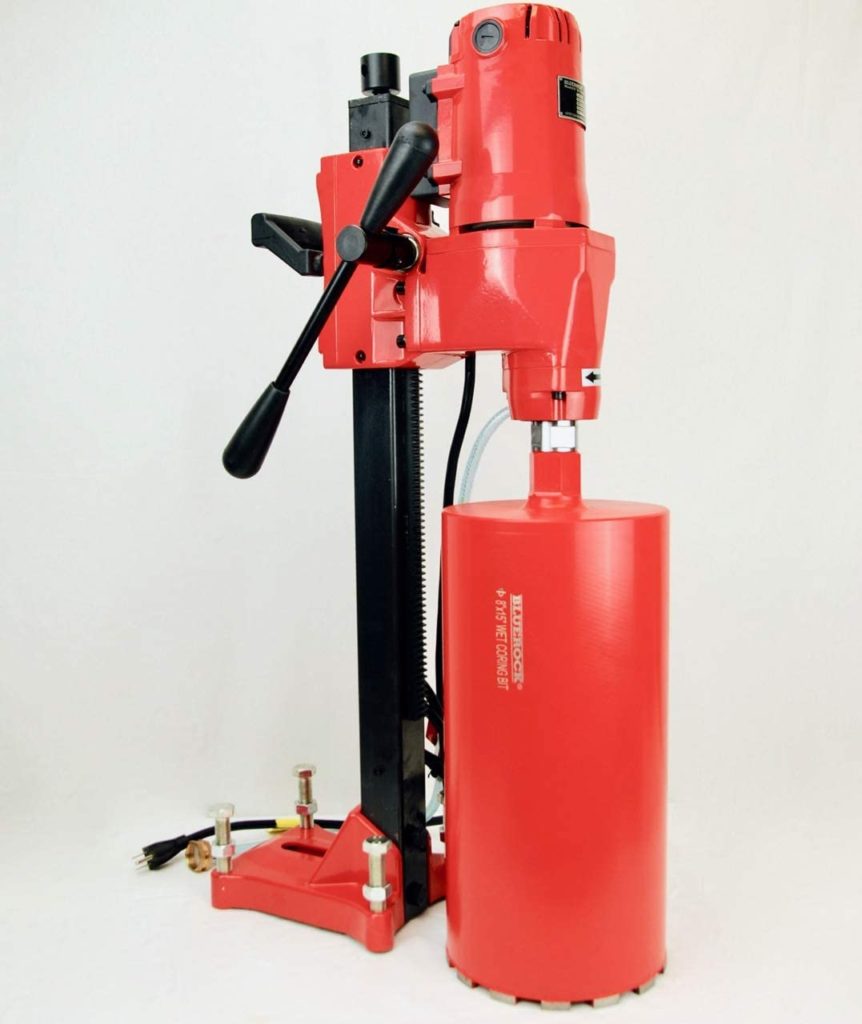
A core drill comes in handy when looking to put large holes in walls or surfaces. They come with a secondary grip and safety clutch for better handling and safety.

Pneumatic Drills
Also known as jackhammers, pneumatic drills use compressed air to power their operations. They are extremely powerful, making them ideal for heavy-duty use, such as drilling in rocks or breaking pavements. Pneumatic drills are ideal for use in potentially explosive environments. Some of these drill types include:
21. Straight Air Drills
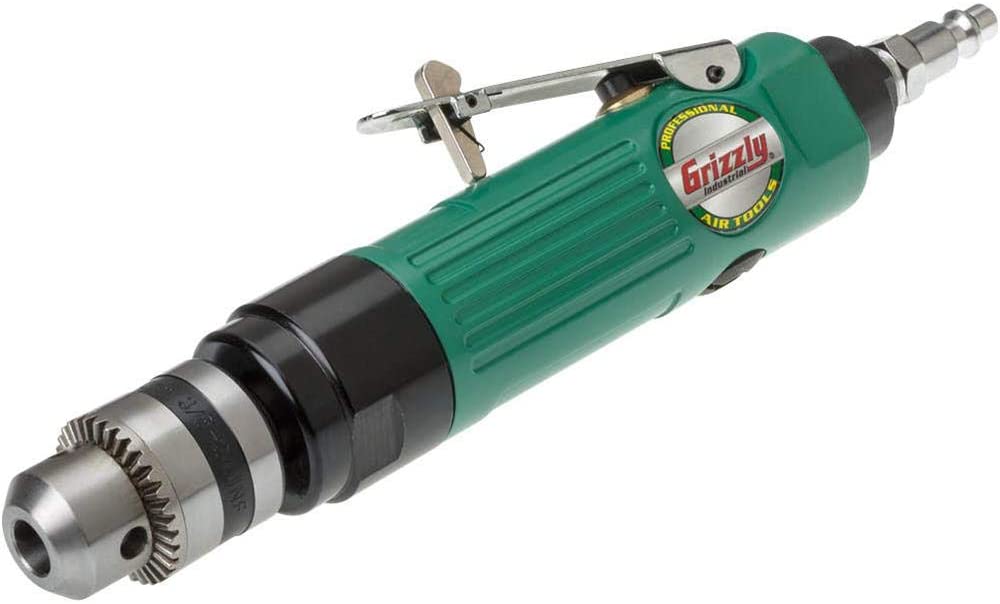
Straight air drills feature a compact frame, making them ideal for use in tight spaces. Moreover, they are great alternatives to traditional power drills since they generate more power despite being smaller.
22. Gun Handle Drill
Gun handle drills are even more powerful than straight air drills. As a result, they are best suited for industrial applications. They are the most common type of corded drills.

Heavy-Duty Drills
If you run a workshop that does heavy-duty drilling constantly, a drill press would be your best option since they are large and powerful. Some include:
23. Portable Drill Press
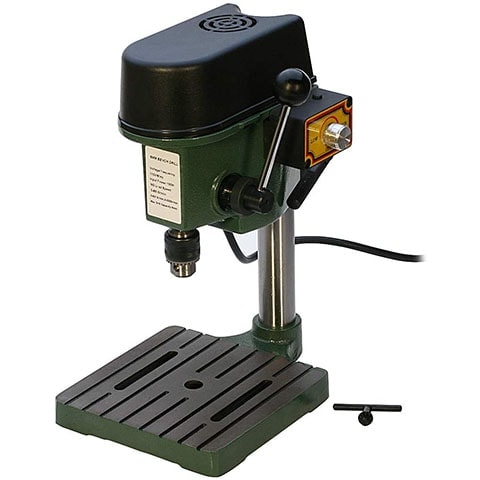
Also known as a benchtop drill press, it has smaller proportions than standard drill presses, making it a good choice for DIYers. However, it can hold its own in an industrial setting.
24. Floor Drill Press

This is a larger and more powerful version of the benchtop drill press. The floor drill press is ideal for drilling long and dense objects.
25. CNC Drill Press
This multifunctional machine can drill, bore, mill, and turn. Since it is programmable, it is typically used in mass production factories to create precise holes.
26. Mill Drill
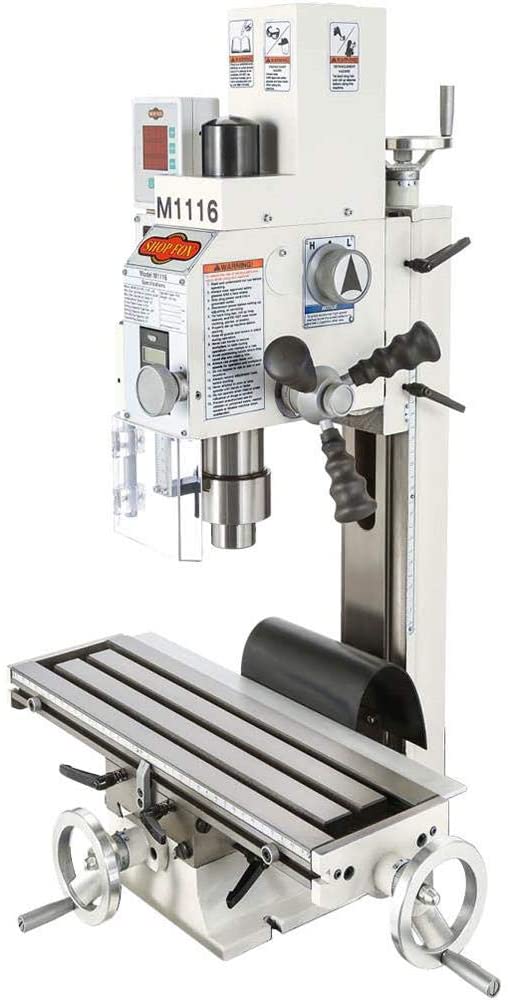
This drill press also operates as a milling machine. In fact, it resembles a heavy-duty drill press, only that it features a larger column and comes with an X-Y table. Therefore, in addition to boring holes, it also removes material. This makes them one of the most versatile tools in a machinist’s workshop.
27. Paper Drill
Just as its name suggests, this drill press is used for making precise holes in paper. Paper drills resemble standard wood drill presses in both function and appearance. However, they vary considerably in power.

Specialty Drills
Some drills are designed for very specific purposes. This means that they cannot be used in any other application. Such units are referred to as specialty drills. Here are some good examples.
28. Cranial Drill

The cranial drill has been designed to make holes in dense bones. As such, if you are not in the medical profession, you are unlikely to need one. Cranial drills are most commonly used by neurosurgeons to drill holes into the skull.
29. Dentist Drill

Resembling a ratcheting wrench, the dentist drill sports a long handle, a cylindrical head, and a tiny bit. This unit can achieve insane speeds of up to 250,000 RPM. As you can tell from its name, it is what the dentist uses to work on your teeth.
30. Mini Drill
The mini drill is a type of hand drill. This tiny unit resembles a precision screwdriver. It is typically used for high-precision hobbies such as watch and jewelry making. Despite the intricate nature of the work they are involved in, they are remarkably easy to use.
You might also be interested in:
- How Much Does It Cost to Drill a Well?
- Parts of a Drill (Explained with Pictures)
- 4 Best Mini Mills – Top Picks & Reviews
- 5 Best Right Angle Drills
- What Is a Wheel Alignment (And Do I Need One)?
- Why Does My Transmission Fluid Leak When Parked?
- How to Dry Clothes Fast (Top 10 Methods)
Featured Image Credit: Pixabay
Contents

